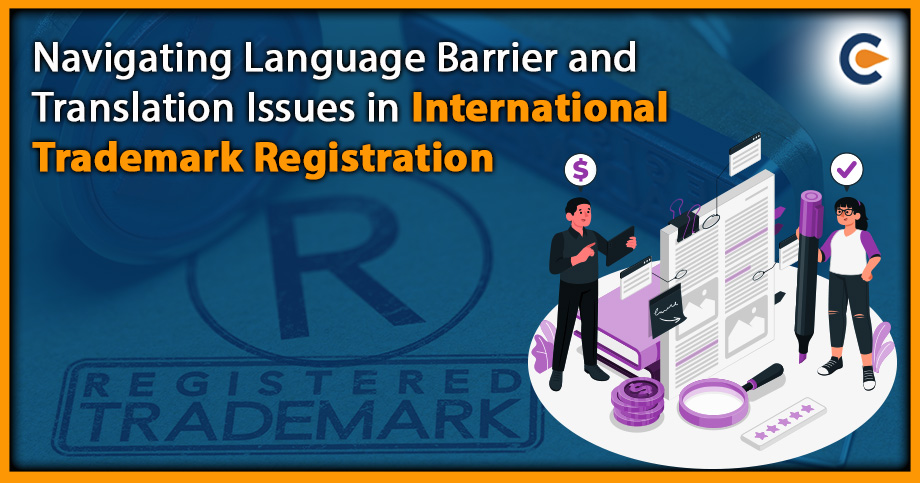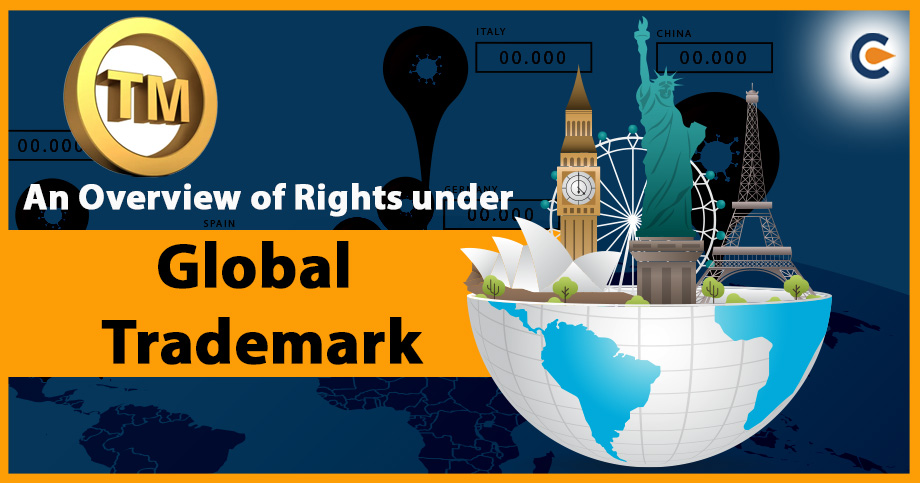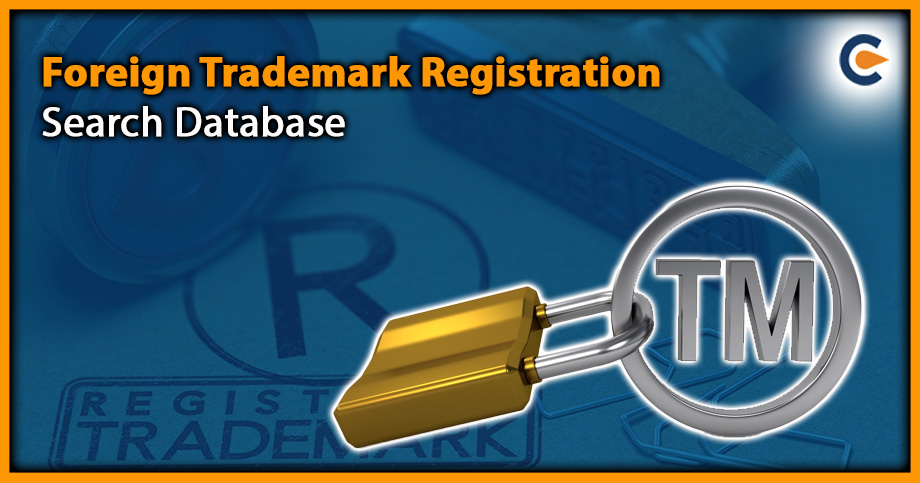A trademark can be registered internationally to receive protection across several nations with only one application. This is accomplished through the Madrid System, a system based on international treaties that enables trademark owners to submit a single application to the World Intellectual Property Organization (WIPO) to register their trademarks in a number of system-compliant nations. However, because various nations have distinct language standards and legal terminology, resolving language and translation challenges can be difficult when registering an international trademark. Understanding these requirements and working with experienced professionals to ensure accuracy and avoid potential legal issues is crucial. Scroll down to check more about navigating language barrier and translation issues in international trademark registration.
What is International Trademark Registration?
A brand or product can obtain trademark protection in several nations by registering an international trademark through a single application. The Madrid method, a treaty-based method that enables trademark owners to submit a single application to the World Intellectual Property Organization (WIPO) to register their brand in a number of system-member nations, achieves this. A brand or product can be protected in several areas with just one application, thanks to the many benefits of international trademark registration, which include streamlined application processes, lower prices, and more straightforward application procedures.
Importance of Language Barrier and Translation Issues in International Trademark Registration Process
The use of language and translation is essential to the process of registering an international trademark. Applications for trademark protection must be lodged under the Madrid System in the nation or area where protection is sought. According to the number of nations the trademark owner seeks protection in, a single application must be translated into many languages. Translation accuracy is essential since any mistakes or discrepancies might cause the application to be rejected or lead to future disputes regarding the trademark’s legality. Additionally, legal jargon and intricacy can differ significantly between languages and nations. Hence, it’s critical to engage with experts that comprehend the complexities of worldwide trademark registration and can deliver appropriate translations. Ensuring all documentation is correct and complies with applicable standards is crucial since failing to manage language and translation challenges effectively can have severe legal and financial repercussions.
Importance of Navigating Language Barrier and Translation Issues in International Trademark Registration
Navigating language barrier and translation issues in International Trademark Registration are crucial when registering a trademark, especially when doing so internationally. To register a trademark, a trademark application must be submitted to the appropriate authorities in the official language of the nation or territory where protection is desired. The application should contain all pertinent details on the trademark, such as its definition, intended purpose, and the products or services it will be used for. It’s crucial to make sure that the data you offer on the application is correct and comprehensive.
It can be not easy to navigate language and translation challenges, especially when the applicant does not know the language of the nation or territory for which protection is requested; working with qualified translators and legal professionals who can render correct translations of the application and guarantee compliance with regional laws and regulations is advised in such circumstances.
The translation of trademarks into local languages is a frequent problem that occurs during trademark registration. This can be especially difficult when the trademark has a particular connotation or meaning in the original language. It is crucial to ensure the translation correctly represents the trademark’s intended meaning and does not deceive or confuse customers. The use of legal jargon in trademark registration is another crucial concern. Legal jargon may be complicated and differ significantly between languages and nations. Use precise language that is simple to understand for local authorities and correctly expresses the intended meaning.
Also Read: Tips For Filing an International Trademark Registration in India
Best Practices for Navigating Language Barrier and Translation Issues in International Trademark Registration
Navigating language barrier and translation issues in International Trademark Registration is crucial for successful international trademark registration. To ensure accuracy and compliance with regulations, here are some best practices to navigate Language Barrier and Translation Issues in International Trademark Registration:
- Work with Experienced Professionals: Collaborating with trademark attorneys and translation service providers with expertise in foreign trademark registration and who can deliver precise translations is critical.
- Conduct Thorough Research: Language standards and legal jargon vary between nations. To comprehend the criteria and guarantee compliance, it is crucial to undertake an in-depth study of each nation where protection is sought.
- Keep Up-To-Date With Changes In Regulations: Rules governing language and translation needs may change over time. Any time there are changes to the law, it is crucial to keep informed and make the appropriate adjustments.
- Please Choose The Correct Language For Registration: It’s crucial to consider the target market when choosing a suitable language for registration. To guarantee the greatest protection, it may occasionally be essential to translate the trademark into the local tongue.
- Use Plain Language: Legal jargon can be difficult to understand and varies depending on the language. Communicating in clear, understandable language that appropriately reflects your intentions is preferable.
- Thoroughly Evaluate Translations: In order to assure accuracy and prevent any legal difficulties, thoroughly reviewing translations is necessary. Any errors or discrepancies in the documentation might result in the application being rejected or subsequent legal challenges to the trademark’s validity.
Trademark owners may successfully handle language and translation challenges and guarantee that their trademarks are protected globally by adhering to these best practices.
Judicial precedents
Indeed, trademarks in other regional or foreign languages may be registered in India. The issue emerges, though, when the English translations of the foreign language mark are adjectives. The doctrine of foreign equivalents, which tests whether a mark is descriptive and under which foreign words are translated into English, have been established and applied by US courts. To evaluate the descriptiveness of marks, the Indian Judiciary has, however, used a separate set of guidelines when dealing with such situations.
According to the Delhi High Court, using the infringing mark in the form of a translation (the same trademark in a different language) or its transliteration is illegal. In this regard, the Court noted that according to Section 29(9) of the Trade Marks Act[1], the spoken use of words that make up the distinguishing character of a registered trade mark may constitute infringement of the trademark. The Court did not accept the Defendant’s argument that there would be no infringement because the mark was being applied in Arabic.
The Bombay High Court did not apply the doctrine when deciding the case of C.Kamani Oil Industries Pvt. Ltd. v/s Bhubaneshwar Refineries Pvt. Ltd. in 2014, and it was of the opinion that marks that were borrowed from a foreign language and commonly used in India could be considered descriptive in India but not elsewhere. Such marks cannot be because they contain foreign words that are not typically used in India or where it is unlikely that the consumers of the products bearing such a mark will be familiar with their meaning.
Conclusion
In conclusion, international trademark registration provides an efficient and cost-effective way for trademark owners to protect their brand or product in multiple markets. However, navigating language barrier and translation issues in international trademark registration is very crucial. It is essential to work with experienced professionals who understand the intricacies of the process, conduct thorough research on each country where protection is sought, and stay up-to-date with any changes to regulations.
Choosing the appropriate language for registration, using plain language, and reviewing translations carefully is also essential to ensure accuracy and avoid potential legal issues. By following these best practices, trademark owners can protect their trademarks internationally and avoid costly mistakes. Ultimately, taking the time to navigate language and translation issues properly ensures the long-term success and growth of a brand or product on a global scale. For more info, Please get in touch with Trademark Consultant.











